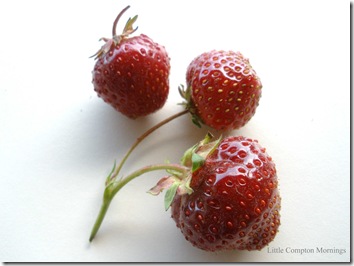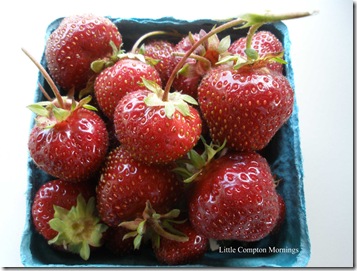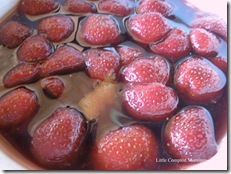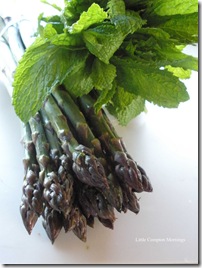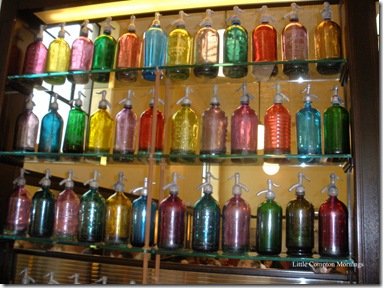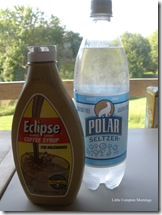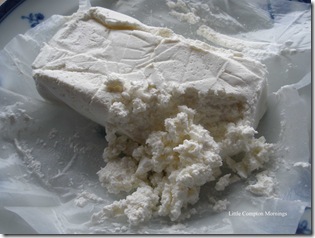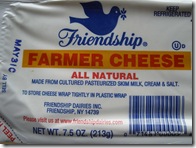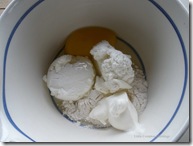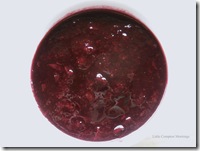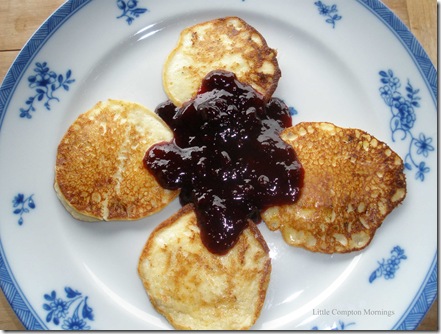 Whether by coincidence or subconscience, I have always lived in a dairy farming region. And while actually living within a few miles of a dairy farm or true dairy store has not actually been a criterion (like, for example, living close to a good bakery has always been), I’ve somehow managed to do that with great continuity and serendipity. The upshot: great heavy cream, the stuff grandmothers bemoan the loss of and chefs source from distant purveyors, has always been mine for the asking. I am happily spoiled.
Whether by coincidence or subconscience, I have always lived in a dairy farming region. And while actually living within a few miles of a dairy farm or true dairy store has not actually been a criterion (like, for example, living close to a good bakery has always been), I’ve somehow managed to do that with great continuity and serendipity. The upshot: great heavy cream, the stuff grandmothers bemoan the loss of and chefs source from distant purveyors, has always been mine for the asking. I am happily spoiled.Heavy cream is the higher-fat layer that separates from milk when (in commercial production) spun in a centrifuge, or that (naturally) rises and is skimmed from the top of unhomogenized milk—hence another name, “top cream.” Heavy cream is sometimes also called “whipping cream” because it can be beaten to double its volume, but in recent decades a distinct “whipping cream” product has appeared in the market that is lower in fat (30-36%) than true heavy cream. In this country, the heavy cream you buy in the market is usually 36% butterfat. Creams available from dairies may be 38-40% butterfat or more, and these few percentage points make a remarkable difference. Also, much store-bought cream is ultra-pasteurized for longevity, while the cream from a local dairy is minimally pasteurized or, if you can get someone to sell it, raw. Raw or minimally pasteurized cream, and cream with a high milkfat content, will whip (and taste) the best.
Cream is a dream for cooking and baking, whether the centerpiece ingredient (ice cream), the garnish (whipped cream), the emulsifier (sauces), the finisher (soups), the fat-liquid combo (scones), or the enricher (drinks, starting with coffee, but let’s not forget the divine peppermint patty of my youth). You should consider heavy cream a staple, and always keep a container on hand for the emergency what’s-for-dinner meal of pasta in reduced cream sauce with a little nutmeg and parm, for rescuing a broken sauce, for transforming a salad dressing, for pouring over oatmeal, berries, pie, or coffee cake. The wondrous cream from local dairies will not keep beyond a week or so, but that’s OK. You will find you use it if you have it. And if after a few days it is as thick as sour cream, it will liquefy when warmed or can be used like clotted cream. If it has indeed soured, then use it as you would any other sour cream. Far better to follow its short natural life than to have a container of supermarket ultra-pasteurized cream, the stabilized keeping qualities of which are downright scary, in your fridge for three months.
Here in Little Compton, we are truly blessed to have access to the heavy cream from Arruda’s Dairy Farm. Arruda’s was established in 1917, and is still owned and operated by one of the founder’s children, Jean, and her husband, Antone Moniz (Sr.). In 2006, the Department of Environmental Management awarded them their Outstanding Dairy Farm of the Year award—no surprise there—citing their hormone free, farm-produced and farm-pasteurized milk. Their whole milk
 is beloved by milk lovers and cake bakers for its 4.5% fat content, about 1% above store milk; it is carried by many area stores. The heavy cream is more of a best-kept secret, however, and not necessarily available where other Arruda products are sold. This cream, with a fat content well into the mid-40% range, is as close to the famous “double cream” of U.K. dairies as one can get. It plops touchingly when you pour it—see the photo to the right and also here in a recipe for pasta with the currently available local snap peas. I am devoted to it.
is beloved by milk lovers and cake bakers for its 4.5% fat content, about 1% above store milk; it is carried by many area stores. The heavy cream is more of a best-kept secret, however, and not necessarily available where other Arruda products are sold. This cream, with a fat content well into the mid-40% range, is as close to the famous “double cream” of U.K. dairies as one can get. It plops touchingly when you pour it—see the photo to the right and also here in a recipe for pasta with the currently available local snap peas. I am devoted to it.Light and Lightning Whipped Cream Cake
This is the fastest cake I make, and I call it light because, even though it contains a cup of heavy cream, there is no butter in it; the cream provides all the necessary fat as well as the liquid. It is a good plain and tender cake, similar to a pound cake but with a looser crumb, for serving with berries, or toasting and buttering for breakfast or an afternoon snack. Makes 1 loaf.

1 cup heavy cream, the highest-fat you can find
2 large brown eggs
1 tea 100% vanilla extract
1 ½ cups flour
1 cup sugar
½ tea salt
2 tea baking powder
Preheat the oven to 350 F. Butter and sugar a standard (8.5x4.5x2.5) bread pan. Sift the dry ingredients together and set aside. In a small bowl beat the eggs until well combined, and set aside.
In a standing mixer fitted with the whisk, whip the cream until it forms a firm peak on the lifted beater, being careful not to overbeat. With the motor running at medium speed, add the beaten eggs and vanilla to the cream; stop as soon as combined.

Change the mixer attachment to the paddle. On low speed, gradually add the sifted dry ingredients; again, stop as soon as combined. The batter will be thick. (If you don’t have a standing mixer, after beating the cream and eggs with either an egg beater or handheld electric mixer, fold the dry ingredients in with a rubber spatula.)
Pour the batter into the prepared pan and shake it back and forth on the counter a bit to distribute and smooth the top. Bake about 55 minutes, or until a skewer comes out clean. Let stand at least 10 minutes before turning out. In the photo, the cake is served with last year’s sour cherries, preserved in a light spiced syrup, removed from inventory (the new cherries should be here any day). This was my son’s birthday cake today, after his requests of a salad with breaded goat cheese and a homemade pizza.

